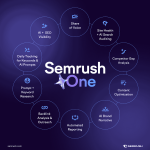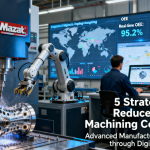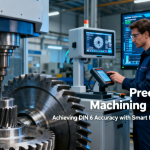The skills gap is growing at an alarming rate with all the advancements in technology. Data shows that nearly half of all businesses struggled with skill shortages in 2020. These deficiencies are a major setback in performance, employee retention, and job satisfaction. When employees constantly feel that they are unable to meet the expectations, their motivation and dedication decline. This impacts the organization’s bottom line and ability to achieve key performance indicators.
Continuous skill development is becoming increasingly necessary for companies due to the changing nature of business prospects. As markets fluctuate and consumer preferences change, the use of AI in training is increasing among organizations. L&D professionals are considering AI to identify and address training gaps within their organizations.
What are Training Gaps?
Let’s first understand what we mean by training gaps. These are the skills, knowledge, or abilities your employees need to perform their jobs effectively but currently lack. Identifying these gaps is essential for creating targeted training programs that deliver actual results.
Traditionally, pinpointing training gaps involves:
- Analyzing employee performance metrics, which can be subjective and time-consuming.
- Gathering feedback from employees, managers, and customers, which can be overwhelming and difficult to consolidate.
- Observing employees on the job, which is again, time-consuming and doesn’t always provide a complete picture.
While these methods provide valuable insights, they can be time-consuming and subjective and overlook subtle skill deficiencies. By the time you identify a training gap, valuable time and resources may have already been lost.
AI Comes to the Rescue
AI is changing the approach. A vast amount of information can be analyzed quickly and accurately with the help of AI. You’ll get insights that were impossible to uncover earlier. There are multiple ways AI can help identify training gaps faster.
. Data Analysis
AI can use employee performance data, customer feedback, and other relevant information to identify patterns and trends. For example, if a particular skill is consistently lacking in employees who struggle with a certain task, AI can flag this as a potential training gap.
. Skill Gap Assessment
AI can assess employees’ current skills against job requirements to identify skill mismatches. This can be done by analyzing job descriptions, performance data, and employee profiles.
. Learning Behavior Analysis
By tracking employee interactions with training materials, AI can identify knowledge gaps. If many employees struggle with a particular module, it indicates a need for further clarification or additional training.
. Predictive Analysis
AI can predict future training needs based on historical data and current trends. For instance, if your company is expanding into a new market, AI can forecast the skills required for success and recommend training programs accordingly.
. Personalized Training
By analyzing employee data, AI can create customized learning programs for each employee, which can highlight specific areas where additional training is required.
. Social Media and Online Content
AI can analyze social media posts, blog articles, and other online content to identify current trends and skill gaps in the industry.
Once AI has gathered this data, it can use machine learning algorithms to identify patterns and best practices. For example, if many employees are facing issues with a task or making similar errors, AI can flag this as a potential training gap.
How Can AI Help Your Business Accelerate the Process
AI can speed things up when finding training gaps. It makes the process much simpler for businesses and fundamentally changes the game. Here’s how:
1. It Speeds Up Employee Data Collection
AI can pull data from different sources, such as HR systems, performance management tools, customer feedback platforms, and even social media, without human intervention. Once the data is in, it can automatically clean, structure, and prepare it for analysis. This way, businesses can save time wasted on data wrangling.
AI can also continuously monitor employee interactions, system usage, and project timelines to provide an up-to-the-minute snapshot of performance. This approach helps organizations identify skill gaps quickly and respond proactively.
2. It Accelerates the Data Analysis
AI excels at finding hidden patterns within massive datasets. It can quickly identify correlations between employee skills, performance metrics, and business outcomes. By analyzing old data, AI can forecast future skill requirements and allow organizations to be proactive rather than reactive. You’ll basically have a tool that can analyze every email, every project, and every interaction your employees have and then pinpoint exactly where the skill gaps are.
For example, if you see a spike in customer complaints about a particular product, AI can quickly identify which employees are involved in that product and what skills they might be lacking. This means you can offer targeted training to address the issues before they become bigger problems.
3. It Helps Businesses Make Smarter Decisions
AI ranks the training needs based on their impact on business objectives. This way, organizations can address critical gaps first to maximize the return and outcome of training investments.
With the help of AI, businesses can analyze the training costs and benefits and then allocate resources accordingly. This prevents overspending on unnecessary training and provides enough support for areas that require high priority.
AI models different training scenarios to understand their impact on employee performance and business outcomes. Companies can use this data to reduce risk and improve decision-making.
AI systems can learn and adapt to growing business needs. As they process more data and receive feedback, they become more accurate in identifying training needs. So, when you incorporate employee feedback on training effectiveness, AI refines its recommendations over time. This helps in aligning the training with actual needs to deliver maximum benefit.
Challenges Businesses Should Consider
AI can be undoubtedly beneficial for businesses. But, there are a few challenges that companies must take into account when implementing AI in their training programs. Some of these challenges are:
- The accuracy of AI data depends on the quality of the data that is fed into the system. Low-quality or incomplete data can create inaccurate results.
- AI algorithms can maintain existing biases if the data used to train them is biased. This results in unfair or discriminatory recommendations.
- AI should be used as a tool to augment human intelligence, not replace it. Businesses must use human expertise to examine AI data before making final decisions.
Closing Thoughts
Identifying training gaps is an essential part of the operation of any business. AI is one such technological advancement that makes identifying those skill gaps easier and simpler. Companies should prioritize complete and quality data collection to make it more beneficial. This could be gathering data on customers, employees, finances, and supply chains. This will help them incorporate AI into their operations and have the maximum impact.
Lynn Martelli is an editor at Readability. She received her MFA in Creative Writing from Antioch University and has worked as an editor for over 10 years. Lynn has edited a wide variety of books, including fiction, non-fiction, memoirs, and more. In her free time, Lynn enjoys reading, writing, and spending time with her family and friends.















